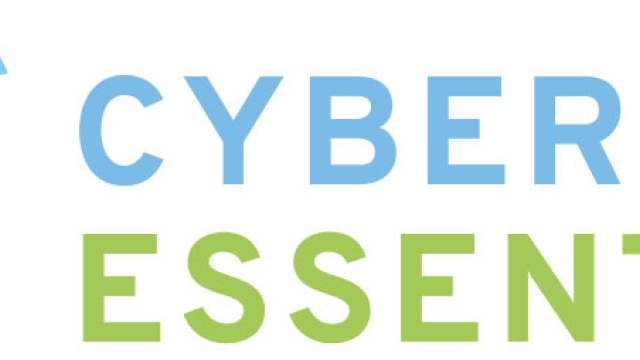
In the digital age we live in, ensuring the security of our online activities has become an essential aspect of daily life. With cyber threats becoming increasingly sophisticated, it is crucial for individuals and organizations to take proactive measures to protect themselves from potential breaches. This is where Cyber Essentials comes into play. Cyber Essentials is a set of fundamental security practices designed to safeguard your digital frontiers, providing a robust defense against common cyber threats. By implementing these essential measures, you can significantly reduce the risk of falling victim to cyber attacks and protect your sensitive information from unauthorized access. Whether you are an individual, a small business owner, or part of a larger organization, understanding and implementing Cyber Essentials is the first step towards building a secure digital landscape. Let’s delve deeper into what Cyber Essentials entails and how it can fortify your digital defenses.
Understanding Cyber Essentials
In today’s digital age, protecting our online presence is of utmost importance. This is where Cyber Essentials comes into play. Cyber Essentials is a set of security measures that businesses and organizations can implement to safeguard their digital frontiers from cyber threats.
The first step in understanding Cyber Essentials is recognizing the need for a comprehensive security strategy. With the increasing frequency and sophistication of cyber attacks, it is crucial for businesses to prioritize the protection of their sensitive information and assets. Cyber Essentials provides a framework that helps organizations identify potential vulnerabilities and implement necessary security controls.
By adhering to the principles of Cyber Essentials, businesses can mitigate common cyber risks and enhance their overall security posture. This includes measures such as secure configuration, user access control, malware protection, and patch management. Implementing these controls not only safeguards against data breaches and financial loss, but also helps to build customer trust by demonstrating a commitment to cybersecurity.
In addition to protecting against known cyber threats, Cyber Essentials also encourages a proactive approach to security. It promotes regular monitoring, testing, and updating of security measures to stay ahead of emerging risks. By constantly evolving and adapting their security practices, businesses can better defend against the ever-evolving tactics employed by cybercriminals.
In conclusion, Cyber Essentials is a valuable tool for organizations seeking to fortify their digital frontiers. By understanding the importance of a robust security strategy and implementing the necessary controls, businesses can enhance their resilience against cyber threats and maintain a secure online presence. Stay tuned for the next sections of this article, where we explore the key components and benefits of Cyber Essentials in more detail.
Benefits of Cyber Essentials
-
Enhanced Security: By implementing Cyber Essentials, organizations can significantly enhance their digital security measures. This certification helps in identifying and mitigating common cybersecurity risks that businesses face, such as malware infections, unauthorized access to systems, and data breaches. With Cyber Essentials, companies can establish a robust defense system and protect their sensitive information from potential cyber threats.
-
Improved Reputation: Achieving Cyber Essentials certification demonstrates a commitment to cybersecurity best practices and signals to customers and stakeholders that the organization takes data protection seriously. This can enhance the company’s reputation, inspire trust, and attract new customers or clients. By showcasing their dedication to safeguarding digital assets, businesses can differentiate themselves in a competitive market.
-
Legal and Regulatory Compliance: Cyber Essentials provides organizations with a strong foundation for meeting legal and regulatory requirements related to data privacy and security. Adhering to these standards can help businesses avoid potential penalties, fines, and legal ramifications associated with non-compliance. Implementing Cyber Essentials not only protects the organization but also ensures adherence to industry-specific regulations, bolstering the overall compliance posture.
Implementing Cyber Essentials
Ensuring a Secure Digital Environment
When it comes to implementing Cyber Essentials, the first step is to establish a secure digital environment. This involves ensuring that all devices and systems within your organization are properly protected against potential threats. Implementing strong firewalls, regularly updating software, and utilizing encryption techniques are some of the key measures that can help safeguard your digital frontiers.
Educating Employees on Cybersecurity Best Practices
Equally important in implementing Cyber Essentials is educating your employees on cybersecurity best practices. Human error can often be the weakest link in the digital security chain, so training your staff to recognize and respond appropriately to potential threats is crucial. By raising awareness about phishing scams, password hygiene, and the importance of not clicking on suspicious links or downloading unknown attachments, you can greatly enhance your organization’s overall security posture.
Regularly Assessing and Updating Security Measures
Last but not least, implementing Cyber Essentials requires the regular assessment and updating of security measures. Technology and cyber threats are constantly evolving, so it is important to stay proactive in identifying vulnerabilities and addressing them promptly. Regularly conducting vulnerability assessments and penetration testing can help identify any weak points in your systems, allowing you to take the necessary steps to reinforce your defenses and ensure the ongoing protection of your digital frontiers.
Remember, implementing Cyber Essentials is an ongoing process that requires continuous effort and vigilance. By establishing a secure digital environment, educating your employees on cybersecurity best practices, and regularly assessing and updating your security measures, you can effectively safeguard your organization’s digital assets and protect against emerging cyber threats.






